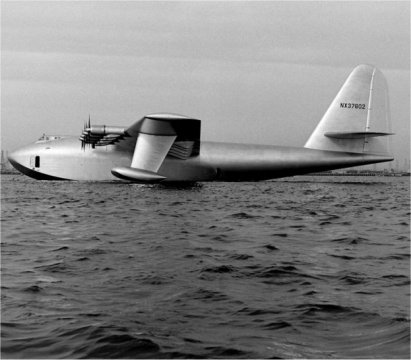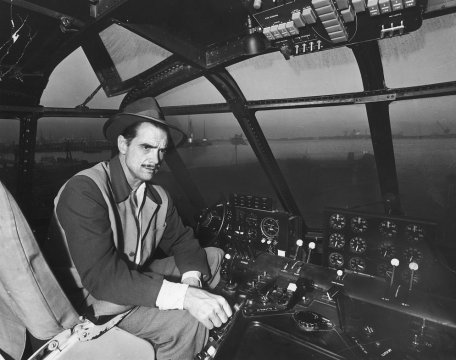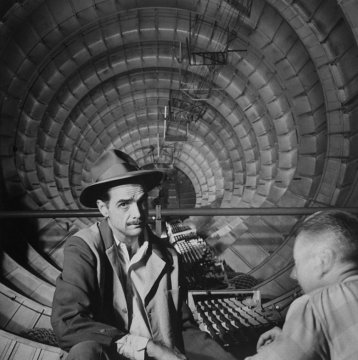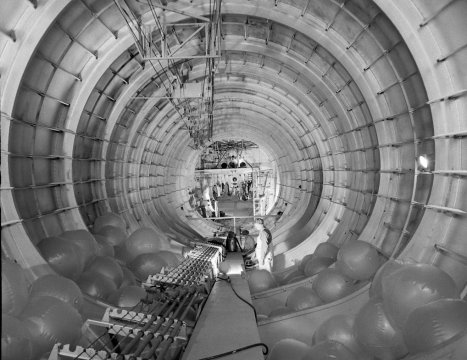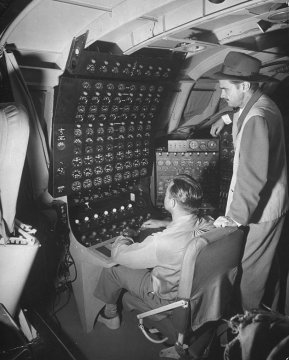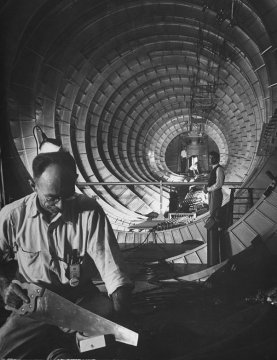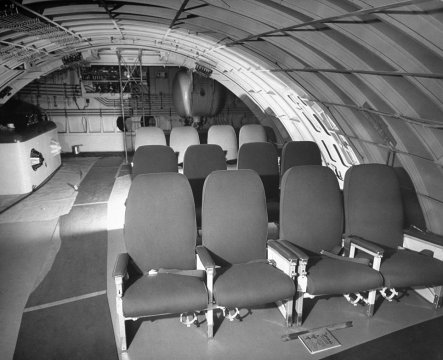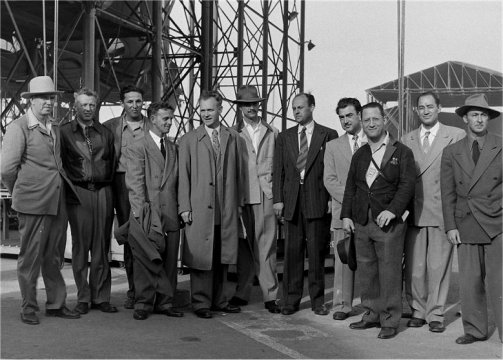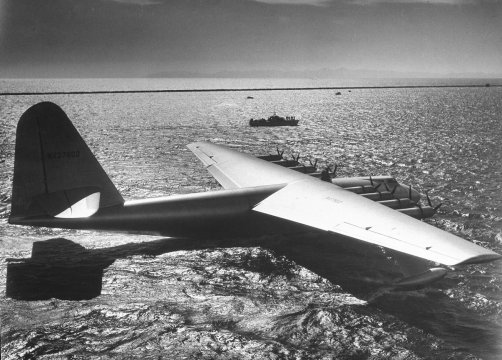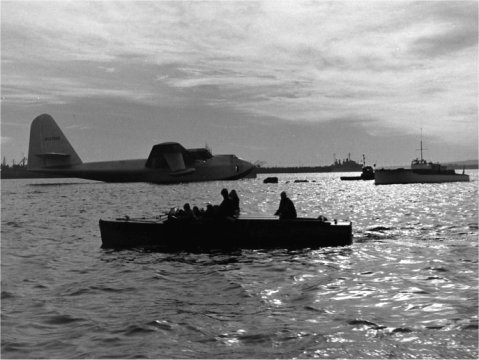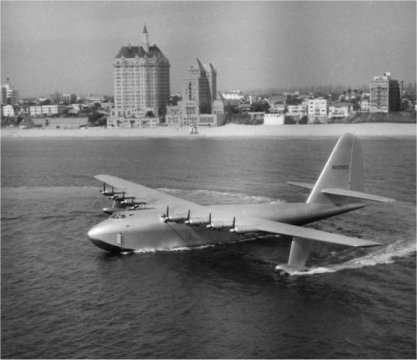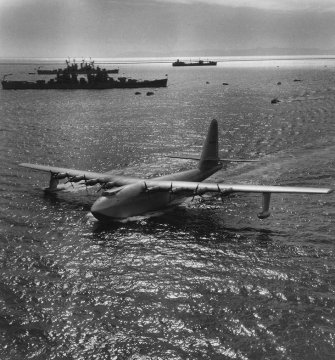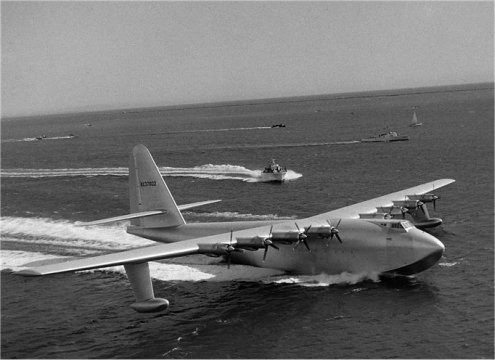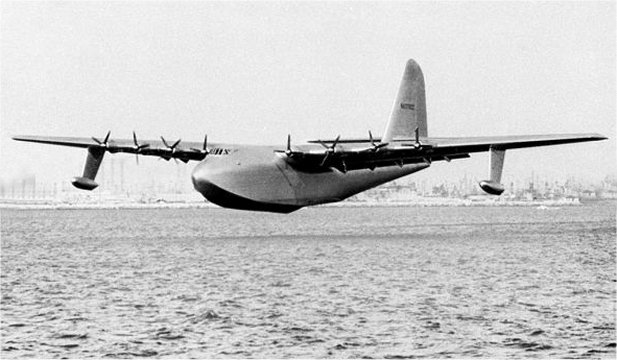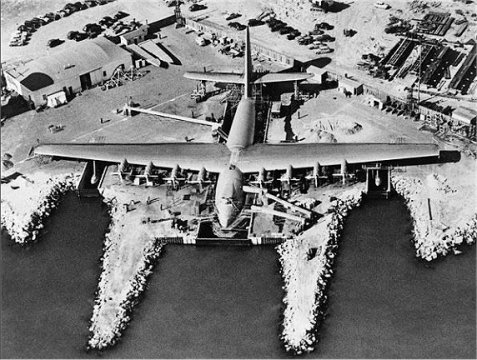 Industrialist, record-setting aviator, movie mogul, recluse — Howard Hughes
was one of the most accomplished and mysterious figures America has ever
produced … and, in the end, one of the most pitiable.
Industrialist, record-setting aviator, movie mogul, recluse — Howard Hughes
was one of the most accomplished and mysterious figures America has ever
produced … and, in the end, one of the most pitiable.
An almost preposterously wealthy and dashing figure of
the 1930s, Hughes was an engineering prodigy who, even as a young boy growing
up in Texas, pushed the proverbial envelope. In 1916, when he was 11, he
built the first radio transmitter ever used in Houston. He was forever
tinkering with engines and electrical devices, re-designing and making
them more efficient, more powerful, more useful, better.
By the time he was in his early 20s, he had discovered
another lucrative talent, and was living the high life in Los Angeles,
producing movies. And in everything he did, whether backing films or flying
and engineering fast (and faster, and faster) planes, Hughes was a hands-on
kind of guy.
When contracted by the U.S. government in the mid-1940s
to build a military transport plane, he responded in his usual modest style
and set about creating the H-4 Hercules, a massive wooden plane later famously
dubbed the “Spruce Goose” which would, when completed, be the largest flying
machine ever built. (The plane was actually made of birch, not spruce:
the contract required that the aircraft be built of “non-strategic materials”
during the war. But the catchy nickname — which Hughes always hated — stuck.)
Despite its enormous size, the Hercules was meant to be
flown with a crew of only three people. Its planned “cargo,” meanwhile,
was beyond impressive: up to 750 fully-equipped military troops, or one
35-ton M4 Sherman tank.
“I want to be remembered for only one thing,” the billionaire
once said, “and that’s my contribution to aviation.”
Before long, however, his contributions — as well as his
integrity and his honesty — would be severely questioned by elected officials
who never had much use for the flamboyant Hughes. In 1947, for example,
he was compelled to testify before a Senate committee led by Sen. Owen
Brewster (R-Maine). Brewster effectively accused Hughes — at the time,
the head of TWA, in addition to his myriad other projects and businesses
— of misusing $40 million in government funds during the development of
two planes: the Hughes Aircraft XF-11 and the H-4 (the Spruce Goose), neither
of which was ever successfully delivered to the government.
During the hearings, which ended inconclusively, Hughes
stirringly defended his work on the H-4, in particular:
“The Hercules was a monumental undertaking,” he testified.
“It is the largest aircraft ever built … I put the sweat of my life into
this thing. I have my reputation rolled up in it and I have stated several
times that if it’s a failure I’ll probably leave this country and never
come back. And I mean it.”
Brewster claimed that the H-4 was a classic and disgraceful
boondoggle and would never, ever fly. On November 2, 1947, for a few minutes
at least, Hughes famously proved him wrong. With co-pilot Dave Grant and
assorted engineers and mechanics, Hughes flew the monumental plane (its
wingspan of 320 feet remains the largest in history) for about a mile,
roughly 70 feet above Long Beach Harbor. The plane never flew again — but
Hughes felt vindicated.
All the controversy and political palaver around the plane’s
construction, meanwhile, obscured something about the H-4 that, to this
day, is often overlooked in any discussion of the mammoth aircraft: namely,
its sheer, sleek aesthetic power. Putting aside for a moment the technical
complexities and challenges inherent in designing a flying vessel the size
of the Hercules, one can do a lot worse than focus on the beauty of the
thing. As an object, the Hercules looks like something Brancusi might sculpt
— if the great Romanian artist dabbled in aeronautics and wished to create
a work 220 feet long, 25 feet high and 30 feet wide.
We offer here a series of photos of the largest “flying
boat” ever built and the aviation genius who designed and flew her.
As the years passed, Hughes retreated deeper into a severe
obsessive-compulsive disorder, drug abuse and the debilitating, deadening
isolation for which he later became so famous. By the time of his lonely
death in April 1976, he had devolved from a rakish, even debonair man of
the world into a skeletal wreck. Postmortem x-rays revealed hypodermic
needles (likely used to inject codeine, to help manage his chronic pain)
embedded in Hughes’ arms. His six-foot, four-inch frame weighed roughly
90 pounds. His hair and nails had grown freakishly long. He was wholly
and frighteningly unrecognizable. He was 70 years old.
 Industrialist, record-setting aviator, movie mogul, recluse — Howard Hughes
was one of the most accomplished and mysterious figures America has ever
produced … and, in the end, one of the most pitiable.
Industrialist, record-setting aviator, movie mogul, recluse — Howard Hughes
was one of the most accomplished and mysterious figures America has ever
produced … and, in the end, one of the most pitiable.
